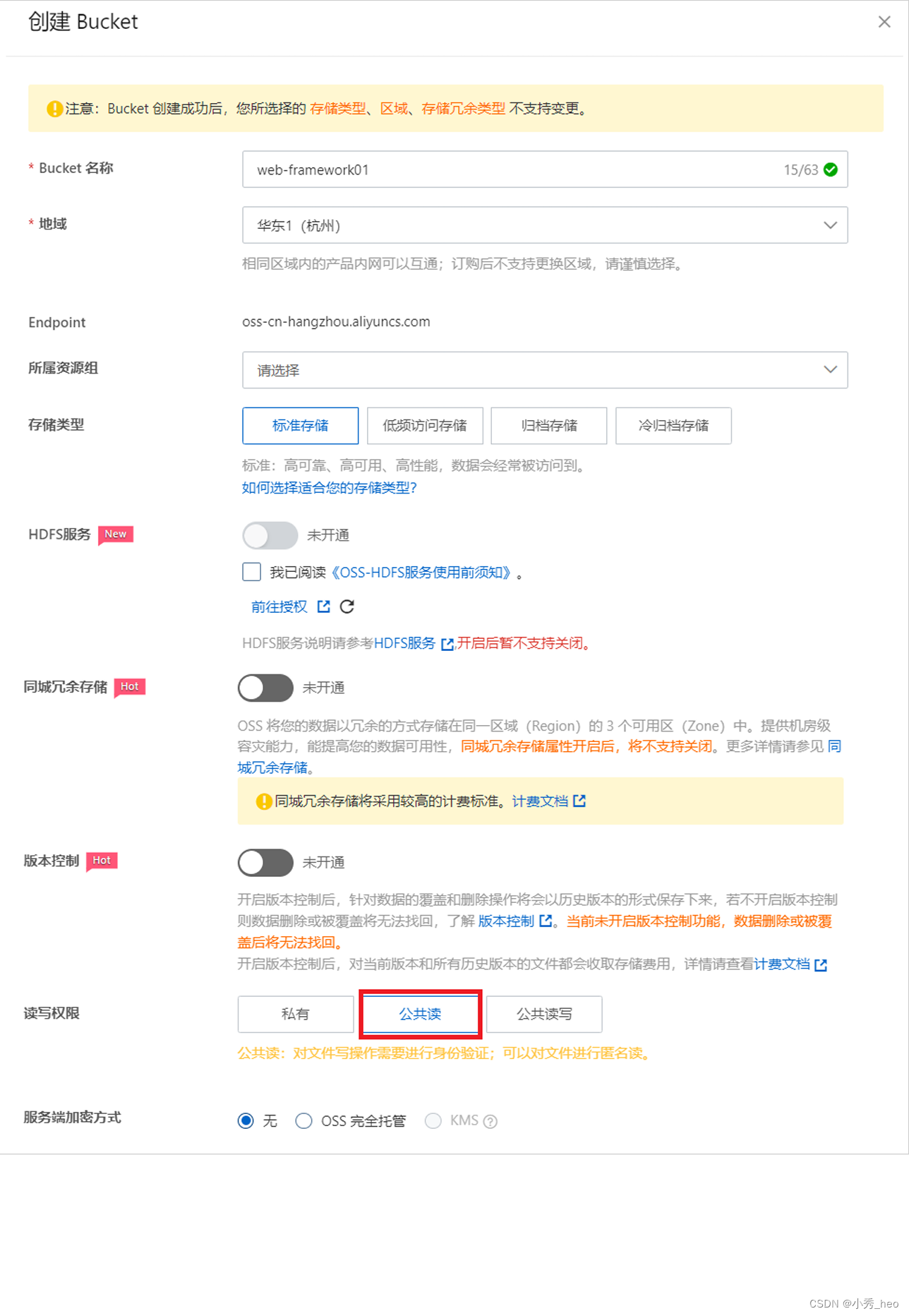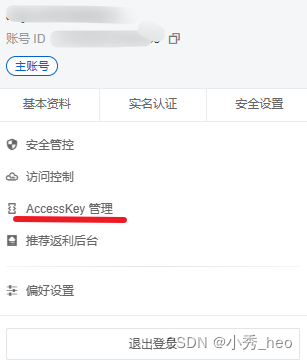1. 阿里云OSS简介
阿里云对象存储服务(Object Storage Service,简称OSS)为您提供基于网络的数据存取服务。使用OSS,您可以通过网络随时存储和调用包括文本、图片、音频和视频等在内的各种非结构化数据文件。
阿里云OSS将数据文件以对象(object)的形式上传到存储空间(bucket)中。
您可以进行以下操作:
- 创建一个或者多个存储空间,向每个存储空间中添加一个或多个文件。
- 通过获取已上传文件的地址进行文件的分享和下载。
- 通过修改存储空间或文件的属性或元信息来设置相应的访问权限。
- 在阿里云管理控制台执行基本和高级OSS任务。
- 使用阿里云开发工具包或直接在应用程序中进行RESTful API调用执行基本和高级
OSS任务
2. OSS开通
(1)打开https://www.aliyun.com/ ,申请阿里云账号并完成实名认证。
(2)充值 (可以不用做)
(3)开通OSS
登录阿里云官网。 点击右上角的控制台。
将鼠标移至产品,找到并单击对象存储OSS,打开OSS产品详情页面。在OSS产品详情页中的单击立即开通。
开通服务后,在OSS产品详情页面单击管理控制台直接进入OSS管理控制台界面。您也可以单击位于官网首页右上方菜单栏的控制台,进入阿里云管理控制台首页,然后单击左侧的对象存储OSS菜单进入OSS管理控制台界面。
(4)创建存储空间
新建Bucket,命名为 hmleadnews ,读写权限为 公共读

3. OSS快速入门
参考文档官方
(1)创建测试工程,引入依赖(建议参考官方文档)
<dependency>
<groupId>com.aliyun.oss</groupId>
<artifactId>aliyun-sdk-oss</artifactId>
<version>3.15.1</version>
</dependency>
<dependency>
<groupId>javax.xml.bind</groupId>
<artifactId>jaxb-api</artifactId>
<version>2.3.1</version>
</dependency>
<dependency>
<groupId>javax.activation</groupId>
<artifactId>activation</artifactId>
<version>1.1.1</version>
</dependency>
<!-- no more than 2.3.3-->
<dependency>
<groupId>org.glassfish.jaxb</groupId>
<artifactId>jaxb-runtime</artifactId>
<version>2.3.3</version>
</dependency>
(2)新建类和main方法
import org.junit.jupiter.api.Test;
import com.aliyun.oss.ClientException;
import com.aliyun.oss.OSS;
import com.aliyun.oss.OSSClientBuilder;
import com.aliyun.oss.OSSException;
import java.io.FileInputStream;
import java.io.InputStream;
public class AliOssTest {
@Test
public void testOss(){
// Endpoint以华东1(杭州)为例,其它Region请按实际情况填写。
String endpoint = "https://oss-cn-hangzhou.aliyuncs.com";
// 阿里云账号AccessKey拥有所有API的访问权限,风险很高。强烈建
议您创建并使用RAM用户进行API访问或日常运维,请登录RAM控制台创建RAM用
户。
String accessKeyId = "---------------------";
String accessKeySecret = "-----------------------";
// 填写Bucket名称,例如examplebucket。
String bucketName = "-----------";
// 填写Object完整路径,完整路径中不能包含Bucket名称,例如
exampledir/exampleobject.txt。
String objectName = "0001.jpg";
// 填写本地文件的完整路径,例如
D:\\localpath\\examplefile.txt。
// 如果未指定本地路径,则默认从示例程序所属项目对应本地路径中
上传文件流。
String filePath=
"C:\\Users\\Administrator\\Pictures\\Saved Pictures\\10.jpg";
// 创建OSSClient实例。
OSS ossClient = new OSSClientBuilder().build(endpoint,
accessKeyId, accessKeySecret);
try {
InputStream inputStream = new
FileInputStream(filePath);
// 创建PutObject请求。
ossClient.putObject(bucketName, objectName,
inputStream);
} catch (OSSException oe) {
System.out.println("Caught an OSSException, which
means your request made it to OSS, "
+ "but was rejected with an error response
for some reason.");
System.out.println("Error Message:" +
oe.getErrorMessage());
System.out.println("Error Code:" +
oe.getErrorCode());
System.out.println("Request ID:" +
oe.getRequestId());
System.out.println("Host ID:" + oe.getHostId());
} catch (Exception ce) {
System.out.println("Caught an ClientException, which
means the client encountered "
+ "a serious internal problem while trying to
communicate with OSS, "
+ "such as not being able to access the
network.");
System.out.println("Error Message:" +
ce.getMessage());
} finally {
if (ossClient != null) {
ossClient.shutdown();
}
}
}
}
(3)获取AccessKeyId
